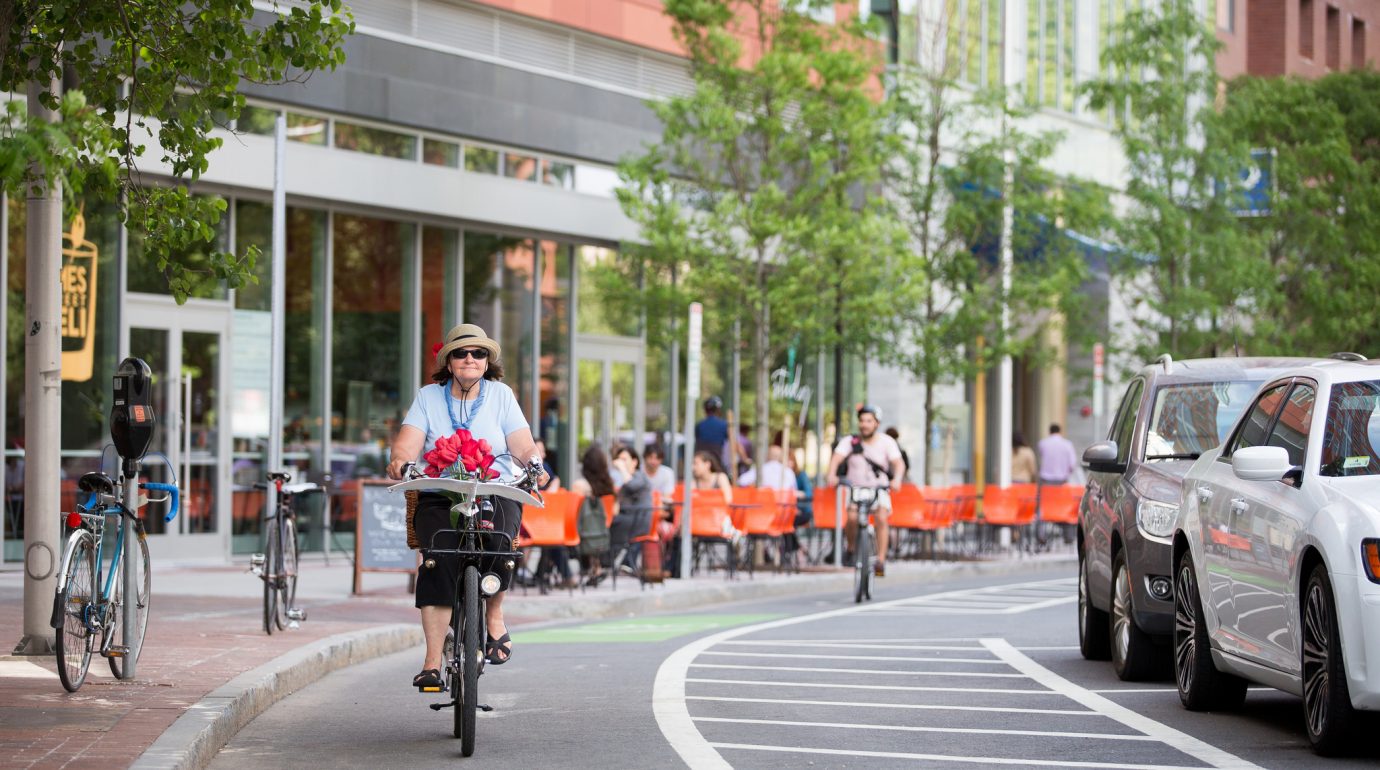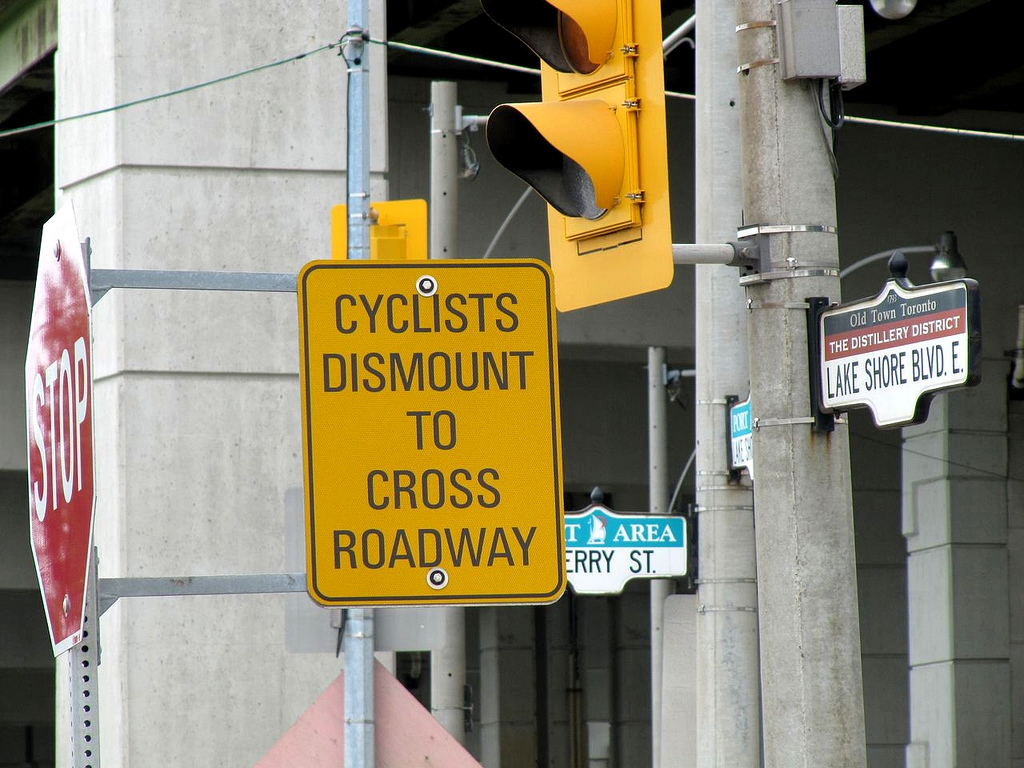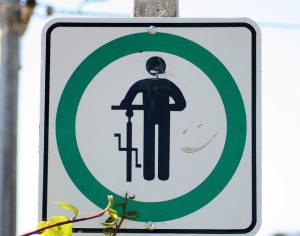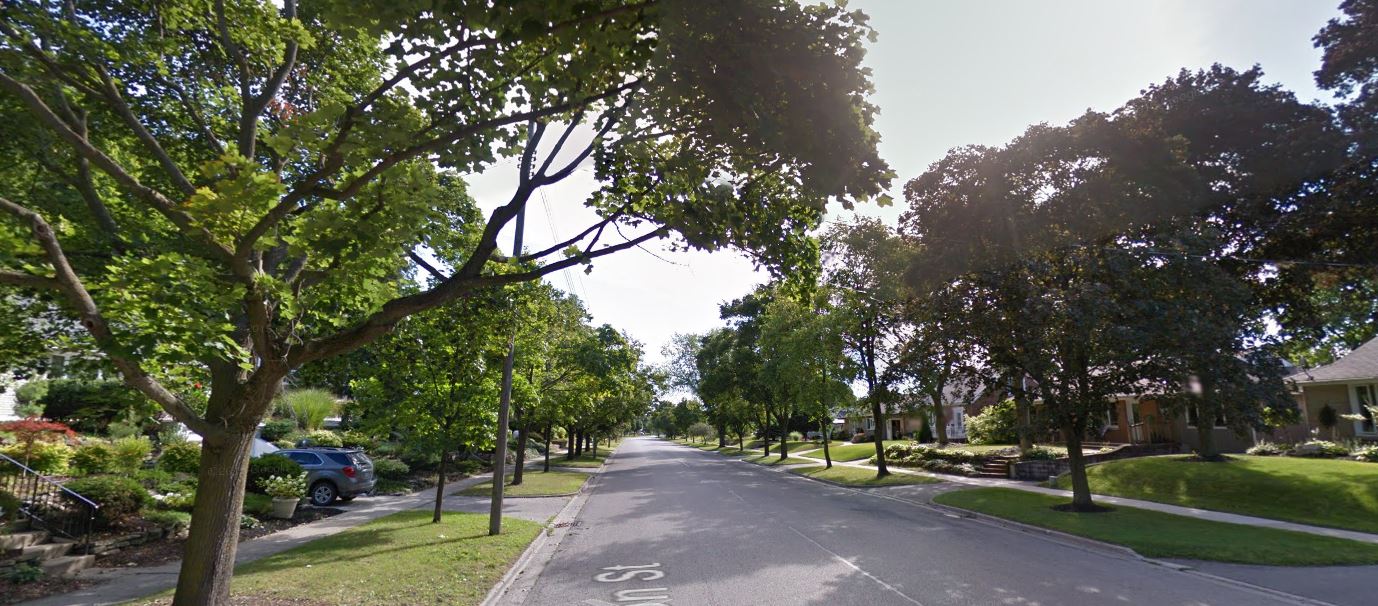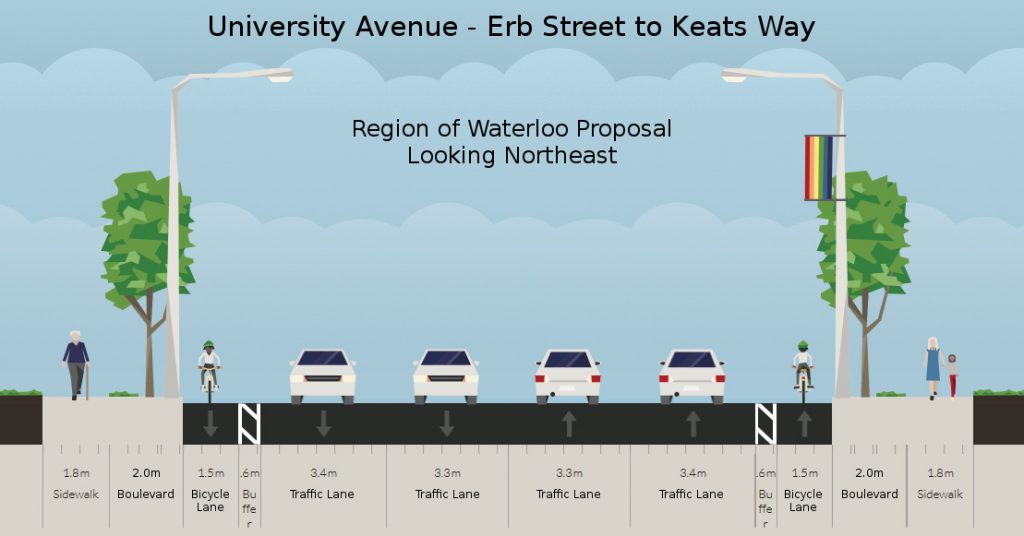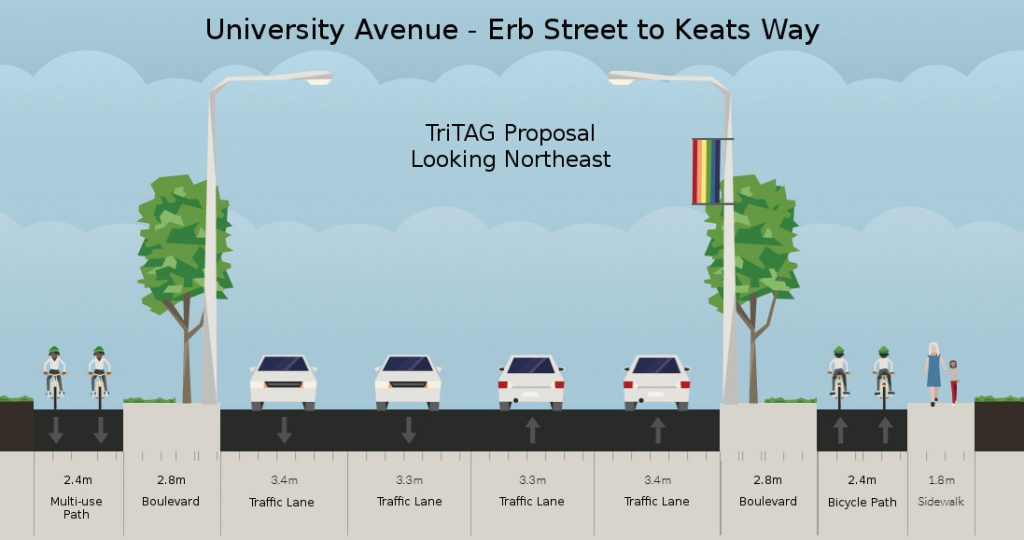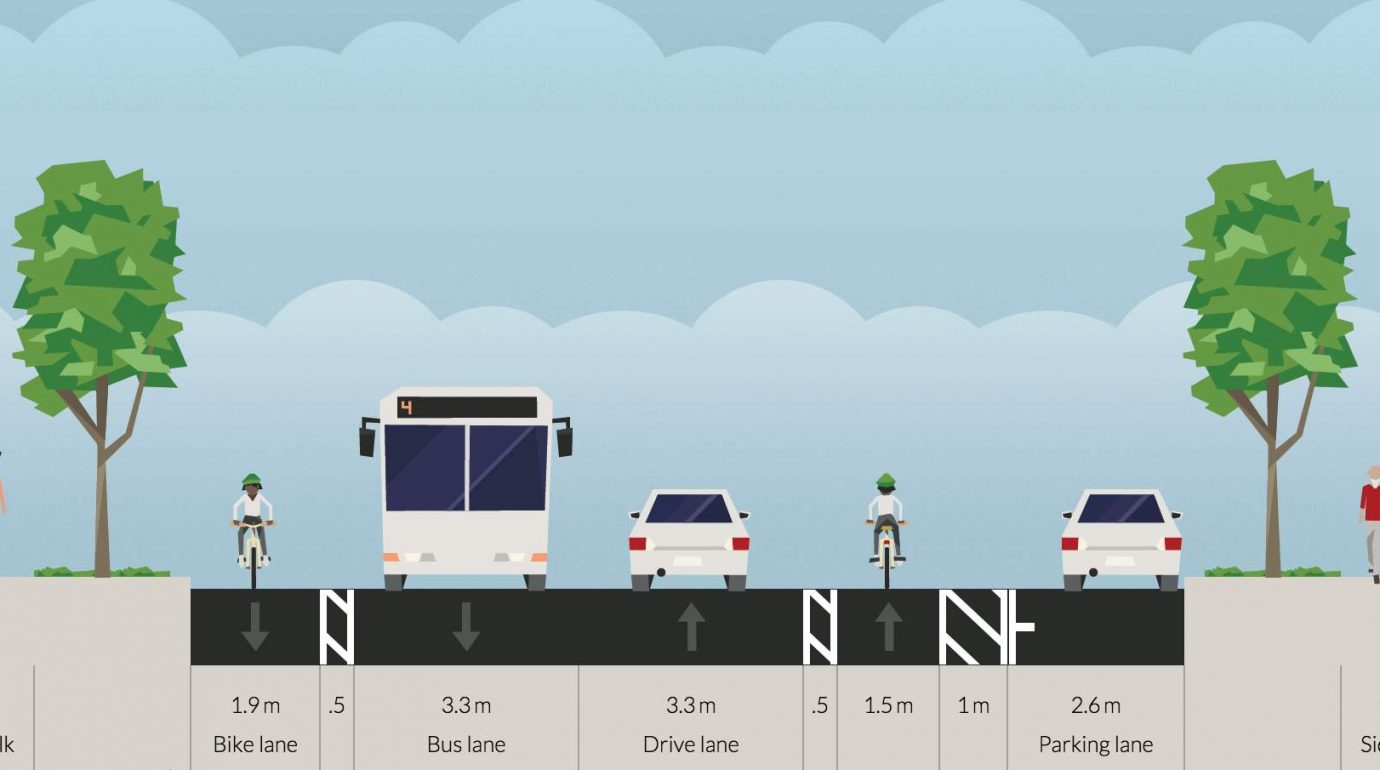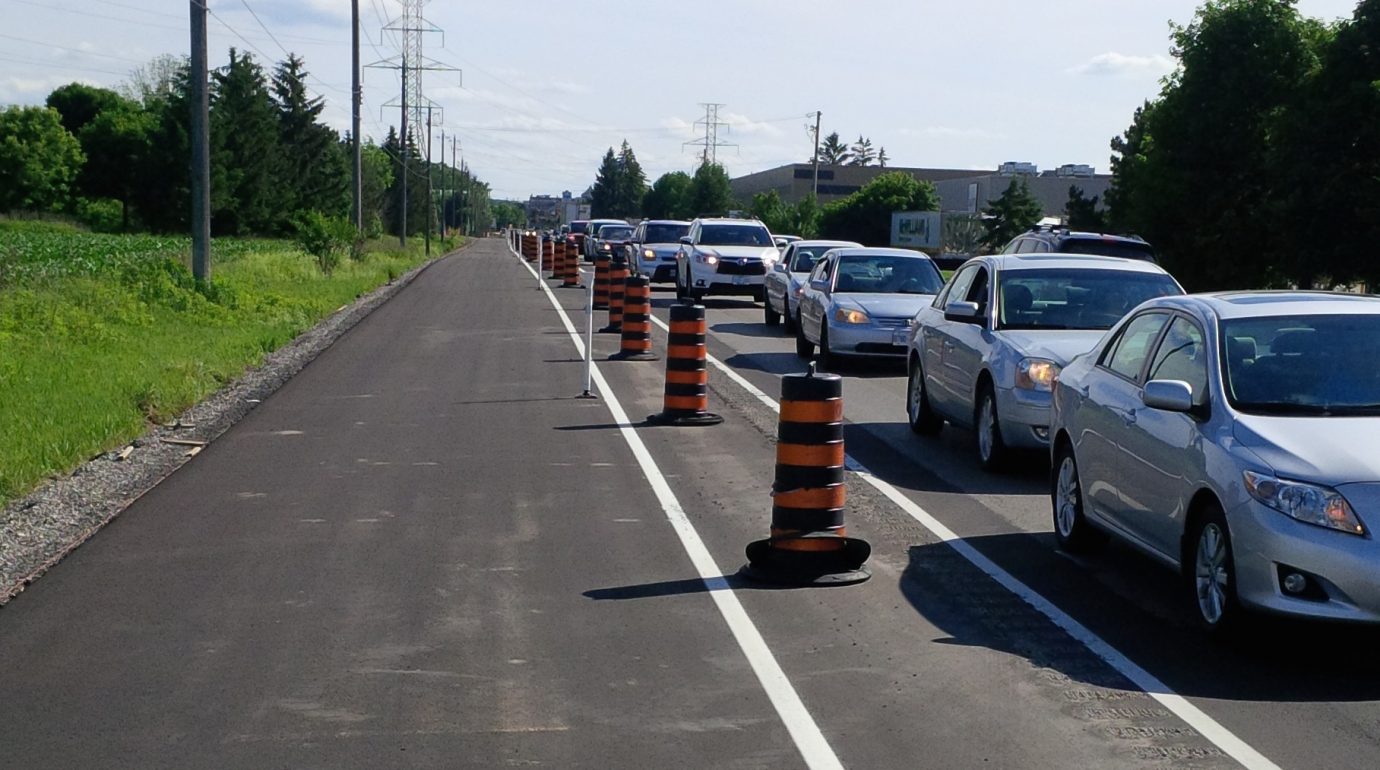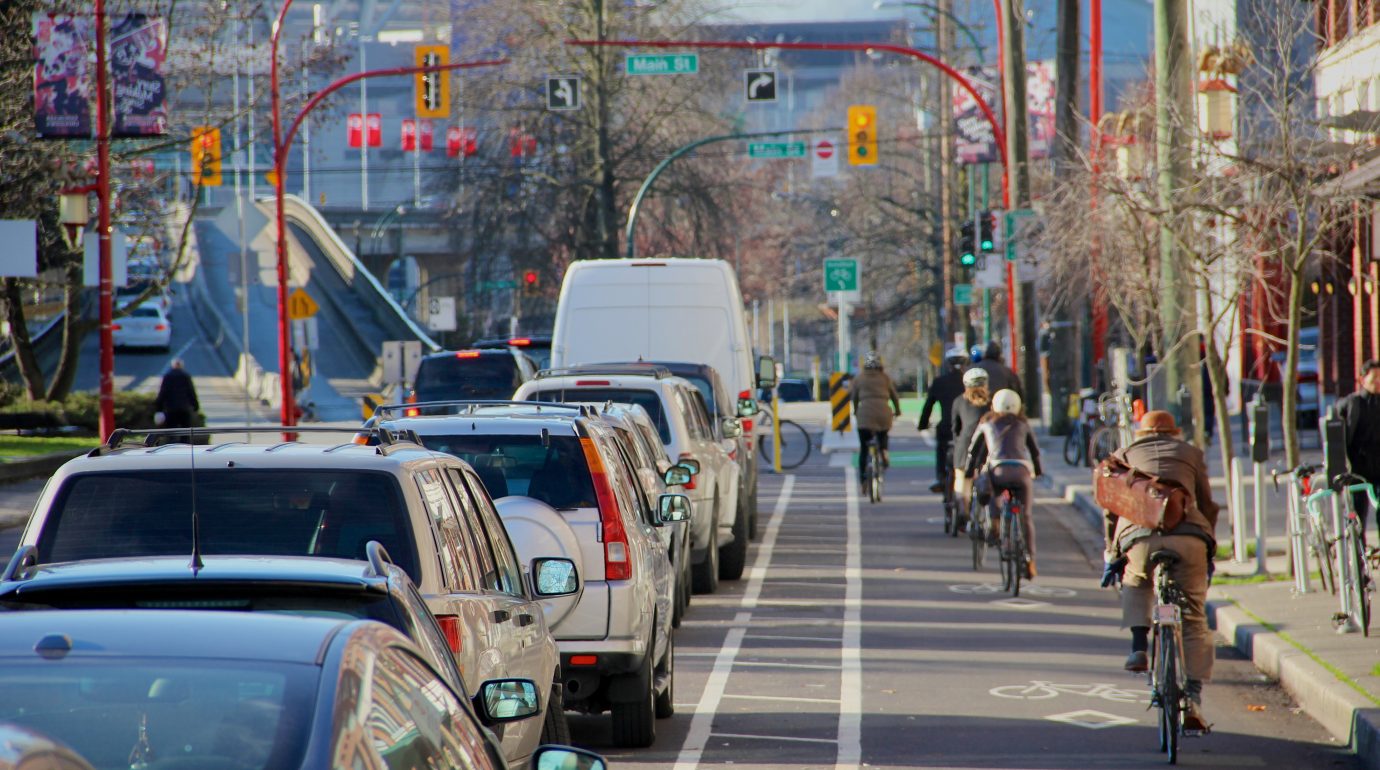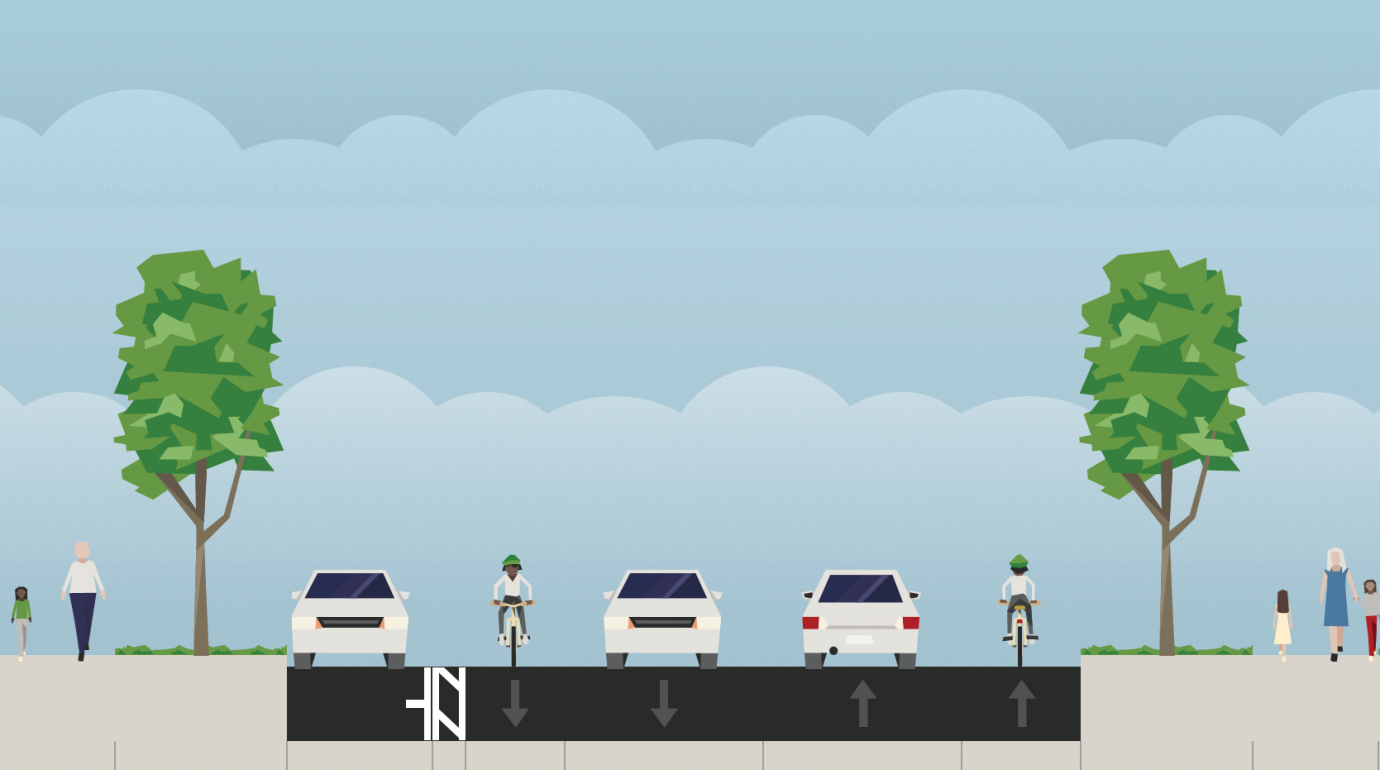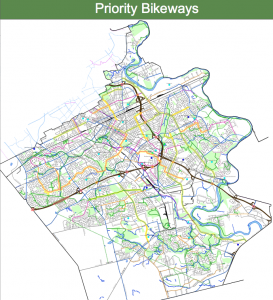Could a vocal opposition prevent Kitchener’s cycling network from being connected and useful?
Kitchener City Council will be voting on whether to put bike lanes on Union Street (Margaret to Lancaster) on Monday, October 5 at 7pm. While Union has been approved as part of the bicycle priority network in Kitchener’s Cycling Master Plan since 2010, and a tentative design was approved last month at the Community and Infrastructure Services Committee, opposition from some residents threatens to overturn these plans, putting the priority network as a whole at risk.
Last month, in the face of vocal opposition, Kitchener City Council opted to shelve a staff-recommended design for buffered bike lanes on Westheights Drive in favour of a compromise design that preserves parking on both sides of the street. While the compromise design affords some improvement to the experience of cycling on the street and could contribute to safer traffic speeds, the decision has made those who advocate for a useful and safe cycling network concerned about future decisions.
The compromise decision was not made on technical merits, but rather on political considerations. Based on data collected systematically by City staff for on-street parking use, reducing parking to one side of the street would have been more than sufficient for resident needs. But to the residents who protested to Council, this wasn’t enough, so Council sought a solution that would satisfy them.
It may be easy to assume that Westheights was a good example of democracy at work: the people spoke, and Council listened. But scratch the surface a little, and you will find this interpretation problematic.
First, it assumes that the opponents who appeared at Council represent the actual majority view of the residents of the street. This is betrayed by the City’s own survey of Westheights residents which found greater numbers in support to the recommended changes than were opposed. (Dissenters claim to have conducted their own survey that showed the opposite, however it’s important to take this resident-led survey with a grain of salt. Given how some supportive voices were intimidated into silence by belligerent opponents during initial neighbourhood consultations, one can easily imagine many residents nodding along to an angry neighbour on their doorsteps for fear of that hostility being directed towards them. Additionally, given the charged rhetoric used to discredit the buffered bike lane design – the ‘super cycle lanes’ and the exaggerated ‘dangers’ of having to cross the street to park – it’s not surprising this survey solicited a more negative response.)
Second, even if the delegates were truly representative of the residents of the street, giving them final say over a street’s design privatizes the public realm and excludes many other important stakeholders. To be sure, those adjacent to a street are important stakeholders, and should be consulted. But a street does not exist merely for the benefit of the property owners along it, but for the public at large. In the case of Westheights and Union, traffic counts reveal that thousands more residents and visitors from surrounding streets and neighbourhoods use the roadway than just those from properties lining these streets. Unfortunately, the City’s own consultation processes, by engaging predominantly with residents from the street itself, feeds this perception that these collector roads are for their private benefit. It may be challenging, but future consultation efforts should attempt to reach out more to the broader cross-section of a street’s current and potential users to get a more representative view of public desires and needs.
In the case of Union Street, there simply isn’t enough space for a compromise like Westheights to accommodate parking on both sides and still have usable bike lanes. And reducing the parking supply to one side still leaves nearly four times as much parking as there is demand. But like Westheights, we anticipate opposition to this change to be fierce.
Fortunately, you can help to bring safe cycling facilities to Union and ensure that the priority network is not compromised. Probably the two most effective things you can do is show up in the Council chamber Monday night and be visible, and if you’re really keen, register to delegate. If you can’t make it, you can also write to your councillors and remind them that you too are a stakeholder in the form that Union Street will take.
Read More »
